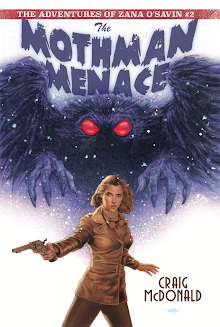Good Guys, Bad Guys
&
The Not So Simple Art of Murder
By Hector Lassiter
(Originally printed in
Writer’s Review, October 1957)
 |
| HECTOR LASSITER |
I live and die by words.
In addition to writing novels, I’m an occasional
screenwriter and journalist.
On any given day, the newspaper I string for has more than
its share of crime reporting. Occasionally, when somebody gets murdered by another
in the reading area, family members from both sides of the crime—the loved ones
of the victims and of the presumed perpetrators—reach out to the reporters or
editors.
They maybe do that in an attempt to shape coverage.
Sometimes
it’s to try and give the paper’s staff a fuller sense of the victim. Sometimes it
seems it’s simply to talk. Their grief is always unimaginable. Their sense of
loss is palpable and clearly nearly insupportable.
The family of the villains
are particularly tricky to talk to. They can’t get around their own memories of
their loved ones.
There’s an old saying among fiction writers: “The villain is
the hero of his own story.” I’m not sure villains really think that way about
themselves, but their loved ones unquestionably do.
Then there are the instances when loved ones of the victims
are still trying to kindle the fire under cold cases. They come seeking a
retrospective news story that might put backward pressure on law enforcement to
give an unsolved crime a fresh look. The crime might be a decade old, but
wounds of survivors are still raw and hurting.
This is all to make clear that every death means something.
Consequently, I can’t take a crime like homicide casually,
even in fiction. To my mind, too many crime and mystery authors do just that.
They trivialize or gloss loss. Corpses, like car chases, are just another genre
trope to these so-called writers.
In truth, most murder victims know their killer.
Terrible fact is, if you’re going to end up murdered, you’re
probably going to be killed by someone you know, and it’s going to be on
impulse. It’s going to be messy and it’s apt to be stupid or spastic in its
execution.
This is where I run into trouble with a lot of my presumed
peers. I call myself a “crime writer” for a reason. I’m emphatically not a “mystery writer.” That term I
regard as a kind of obscenity.
Treating murder as a bloodless affair, something cozy
mystery writers like Estelle Quartermain and her ilk do all the time, is a more offensive creative choice than depicting a
crime in all its graphic squalor, at least to my mind.
In Paris, in the 1920s, I made the acquaintance of a very
talented female “mystery writer” who came around to my way of seeing things in
terms of murder and its treatment on the page.
Having just witnessed the commission of a couple of
true-life, brutal killings, mystery author Brinke Devlin was left questioning
the morality of her own previous writings.
She confessed, “I write comedies of manners with
bloodless murder stirred in… Locked-room mysteries can get a little
deadening after a while… In life, arguments escalate and a too-hard blow falls.
A man comes home from work early because he’s feeling ill and finds his wife in
bed with his brother, or with the fellow down the hall. Sex fiends murder
strangers as opportunity arises. Robberies go bad and somebody innocent dies.
Killers simply don’t kill for the complex or arcane reasons that they do in
mystery novels.”
 |
| BRINKE DEVLIN |
Her
epiphany ultimately drove Brinke Devlin to reinvent herself; to write very
different kinds of novels in which the terror and obscenity of murder wasn’t
slighted simply to advance some puzzle plot.
My
new novel, The Land of Dread and Fear,
focuses on a single murder. A rock is thrown into a quiet pond and the ripples
not only spread wide, but gain momentum as they radiate out from the point of
impact. Actions have consequences; sometimes terrible ones.
I
feel a sacred obligation to give a true sense of what the act of murder exacts
in every direction.
It’s
an old argument really—this debate between how realistically murder should be
depicted in crime and “mystery” novels.
In
a famous essay titled “The Simple Art of Murder,” my old Black Mask stable mate Raymond
Chandler famously wrote of Dashiell Hammett, “Hammett gave murder back to the kind of people that commit it for
reasons, not just to provide a corpse; and with the means at hand, not with
hand-wrought dueling pistols, curare, and tropical fish. He put these people
down on paper as they are, and he made them talk and think in the language they
customarily used for these purposes.”
I have my own
guidelines for the stories I tell: “Character is plot. Obsession is motivation.
The quest, whatever else it may appear to be, is always a search for self—a
race against time to a blood-spritzed epiphany. When that light bulb goes on,
the world goes dark. No happy endings.”
Dear reader: Every life touches other lives.
Consequently, the
snuffing out of a life should do the same thing.
© Hector Lassiter,
1957
Author, screenwriter
and journalist Hector Lassiter makes his home in southern New Mexico. He is the
author of numerous, critically praised crime novels and the screenwriter of
several critically acclaimed thrillers. He is also the protagonist of ONE TRUE SENTENCE, coming Aug. 21, 2014 from Betimes Books.







































No comments:
Post a Comment